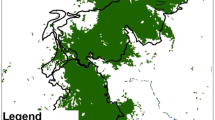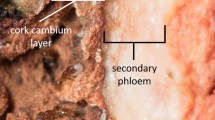Summary.
Raids by the army ant Neivamyrmex rugulosus (tribe Ecitonini) on a nest aggregation of the fungus-growing ant Trachymyrmex arizonensis (tribe Attini) resulted in major brood loss and partial destruction of the fungus-gardens in the attacked nests. T. arizonensis workers attempted to rescue their brood by carrying them to ad-hoc shelters under rocks above ground, but the army ants pursued the workers to retrieve much of the brood. Raids on single colonies lasted about half an hour, after which the escaped T. arizonensis workers returned to their nest with any rescued brood. Raids on single nests occurred repeatedly during the 24-hour period the army ants swept through the T. arizonensis nest aggregation. Compared to unraided colonies, raided colonies were left with only about 25% of their brood. Army ant predation thus is an important source of brood loss to T. arizonensis and probably also to all attine ant species. The behavioral, morphological, and nest-architectural defenses of fungus-growing ants against army ant predation are discussed.
Similar content being viewed by others
Author information
Authors and Affiliations
Additional information
Received 19 October 2001; revised 29 March 2002; accepted 9 April 2002.
Rights and permissions
About this article
Cite this article
LaPolla, J., Mueller, U., Seid, M. et al. Predation by the army ant Neivamyrmex rugulosus on the fungus-growing ant Trachymyrmex arizonensis . Insectes soc. 49, 251–256 (2002). https://doi.org/10.1007/s00040-002-8310-2
Issue Date:
DOI: https://doi.org/10.1007/s00040-002-8310-2




